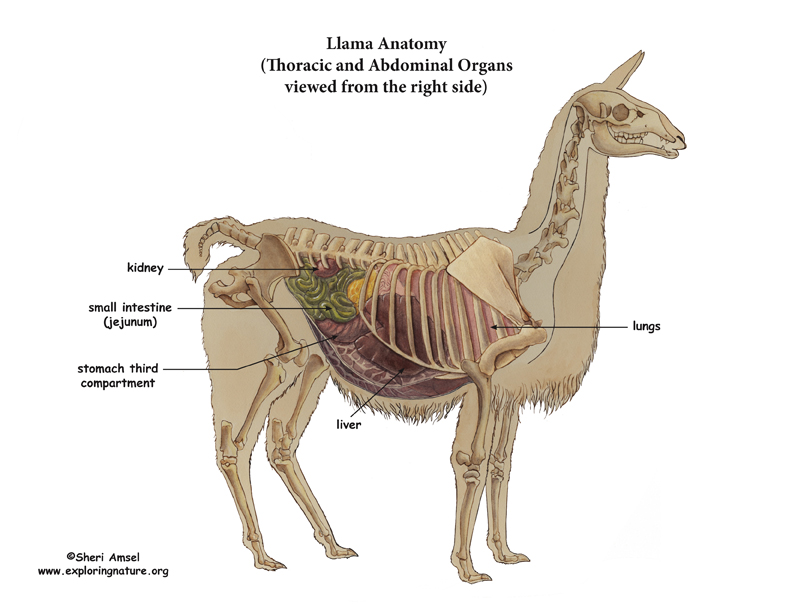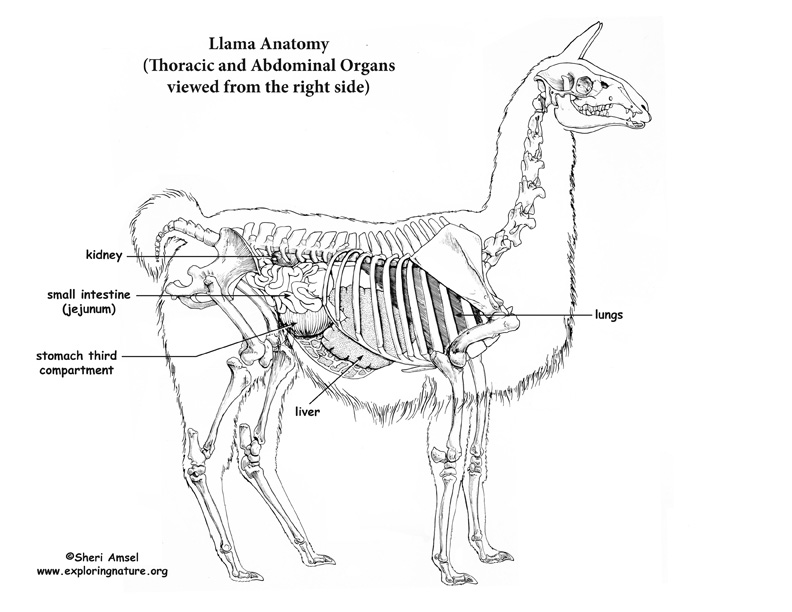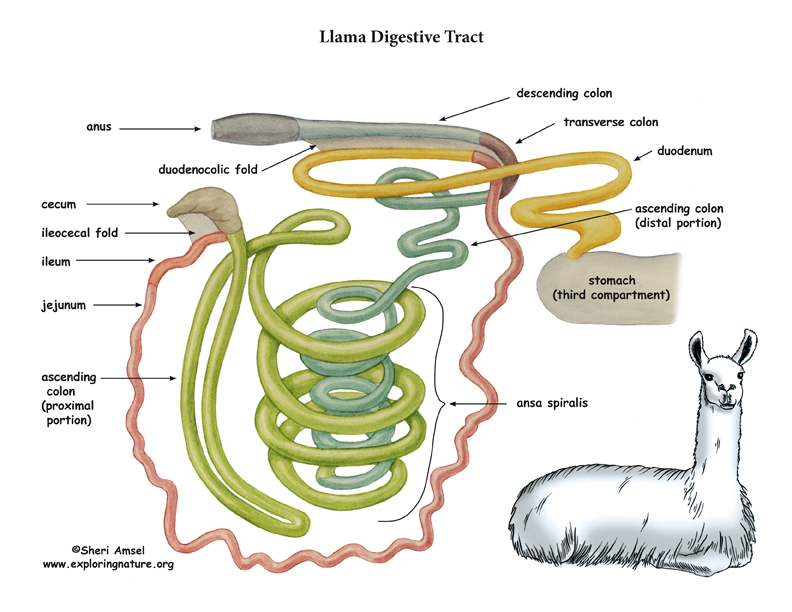

Llamas are ruminants. This means that they have a complex stomach with several compartments that allows them to consume lower quality, high cellulose foods. The stomach compartments allow for fermentation of tough food stuffs, followed by regurgitation and rechewing. Unlike other ruminants who have four compartments (cows, sheep, goats), llamas have only three stomach compartments: the rumen, omasum, and abomasum.
In addition, the llama (and other camelids) have an extremely long and complex large intestine (colon). The large intestine's role in digestion is to reabsorb water, vitamins and electrolytes from food waste that is passing through it. The length of the llama's colon allows it to survive on much less water than other animals. This is a major advantage in arid climates where they live.
When you research information you must cite the reference. Citing for websites is different from citing from books, magazines and periodicals. The style of citing shown here is from the MLA Style Citations (Modern Language Association).
When citing a WEBSITE the general format is as follows.
Author Last Name, First Name(s). "Title: Subtitle of Part of Web Page, if appropriate." Title: Subtitle: Section of Page if appropriate. Sponsoring/Publishing Agency, If Given. Additional significant descriptive information. Date of Electronic Publication or other Date, such as Last Updated. Day Month Year of access < URL >.
Amsel, Sheri. "Llama Thoracic & Abdominal Organs (Right View)" Exploring Nature Educational Resource ©2005-2024. December 14, 2024
< http://www.exploringnature.org/db/view/1001 >



